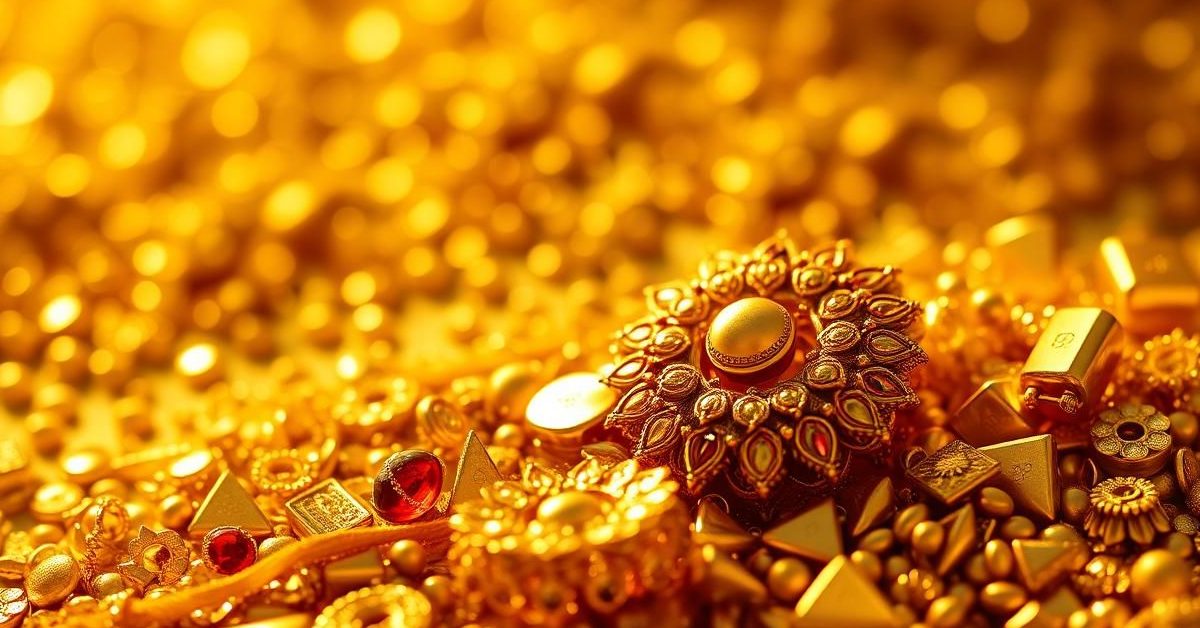The shimmer of gold has captivated humanity for millennia. Far more than just a precious metal, it represents security, aspiration, and a timeless legacy. In an ever-fluctuating global economy, its steadfast value often offers a comforting anchor for investors, particularly those in India where gold is deeply woven into the cultural fabric. Today, as markets react to various domestic and international currents, the price of this cherished asset continues to be a subject of intense interest.
The Timeless Allure of Gold: More Than Just a Metal
For generations, gold has transcended its physical form to embody wealth, status, and emotional significance. From the ornate jewelry gracing Indian festivities to its pivotal role in global financial markets, its appeal is universal and enduring. Historically, it has proven to be an indispensable hedge against the relentless erosion of purchasing power caused by inflation, safeguarding savings when paper currencies falter. This intrinsic ability to preserve value makes it an increasingly vital component in the portfolios of astute investors.
Understanding Gold’s Purity: Decoding Karats
When considering gold, understanding its purity is paramount, as it directly impacts both its price and utility. Gold’s purity is measured in karats (K), with 24K representing the purest form. However, 24K gold, being incredibly soft, is typically reserved for investments like coins or bars. For jewelry, gold is often alloyed with other metals to enhance its durability and create specific hues.
Today, for instance, pure 24 karat gold is currently priced at approximately ₹10,069 per gram. For those seeking a balance between purity and resilience, 22 karat gold, commonly used in Indian jewelry, stands at around ₹9,230 per gram. And for exquisite designs requiring greater strength and intricate craftsmanship, 18 karat gold, with its higher alloy content, is priced at roughly ₹7,552 per gram. Each karat level serves a distinct purpose, catering to diverse needs and preferences.
What Drives Gold Prices? Key Economic & Global Factors
The daily price of gold is not a random figure; it’s a dynamic reflection of numerous interconnected forces. Understanding these drivers is crucial for anyone looking to invest in or purchase this valuable commodity.
Inflation’s Shadow and Gold’s Shine
One of gold’s most celebrated attributes is its role as an inflation hedge. When the cost of living rises and traditional currencies lose their buying power, investors often flock to gold as a safe haven. This increased demand, driven by the desire to protect wealth from inflationary pressures, naturally pushes gold prices upward. It’s a classic inverse relationship, where economic uncertainty often shines a brighter spotlight on gold.
Global Economics and Geopolitical Tensions
Beyond inflation, a myriad of global factors exert significant influence. Interest rate decisions by major central banks, like the US Federal Reserve or the Reserve Bank of India, play a critical role; higher rates can make interest-bearing assets more attractive than non-yielding gold. The strength of the US Dollar, global economic growth forecasts, and even geopolitical conflicts or trade wars can send ripples through the gold market, leading to sharp price movements as investors seek stability amidst instability.
Demand and Supply Dynamics
The fundamental economic principles of supply and demand are also powerful determinants. India, for example, is one of the world’s largest consumers of gold, particularly for jewelry. High demand during festive seasons like Diwali, Akshaya Tritiya, or wedding seasons can cause prices to surge. Conversely, increased mining output or significant liquidation by large institutional investors can augment supply, potentially softening prices.
Gold as a Strategic Investment in India
In India, gold isn’t just an investment; it’s a tradition, a symbol of prosperity, and a cornerstone of financial security for millions. Beyond purchasing physical gold from renowned jewelers like Tanishq, Malabar Gold & Diamonds, or Joyalukkas, modern investors have several avenues to gain exposure to this precious metal. Sovereign Gold Bonds (SGBs), issued by the Reserve Bank of India, offer an attractive alternative, providing interest payments and a sovereign guarantee. Gold Exchange Traded Funds (ETFs) allow investors to buy and sell gold units on stock exchanges, offering liquidity and convenience. Digital gold platforms have also emerged, enabling fractional ownership and secure storage, making gold accessible even to those with smaller budgets.
Today’s Gold Rates Across India’s Major Cities
While the national and international trends set a broad benchmark, gold prices can exhibit slight variations across different Indian cities due to local taxes, transportation costs, and the specific making charges levied by jewelers.
Chennai: The Southern Gold Hub
In Chennai, a city renowned for its deep-rooted cultural affinity for gold and bustling jewelry markets, today’s rates reflect the vibrant demand from consumers and investors alike.
Mumbai: India’s Financial Gold Pulse
As India’s financial capital, Mumbai’s gold market is acutely sensitive to global economic indicators and investment flows, with daily prices reflecting both national and international trends.
Delhi: Capital’s Quest for Gold
In the bustling markets of Delhi, the price of gold is influenced by a diverse consumer base, from traditional buyers to modern investors seeking secure assets.
Kolkata: Eastern India’s Golden Legacy
Kolkata, with its rich history and cultural patronage of gold, presents rates that resonate with a blend of heritage buying and contemporary investment strategies.
Navigating Your Gold Purchase: Tips for Today’s Investor
When venturing into the gold market, always prioritize transparency and informed decision-making. Verify the purity of the gold using hallmark certifications – the BIS hallmark is the standard in India. Compare daily rates from multiple reputable sources or trusted jewelers to ensure you’re getting a fair price. Understand any additional charges like making charges for jewelry or taxes, as these can impact the final cost. Whether for investment or adornment, a little due diligence can go a long way in securing your golden asset.
In conclusion, gold continues to shine as a beacon of stability in an unpredictable world. Its enduring value, coupled with its cultural significance, ensures its place as a cherished asset for generations to come. Staying informed about its dynamic pricing and understanding the forces that shape it empowers you to make wise decisions, securing a piece of this timeless legacy for yourself and your loved ones.












